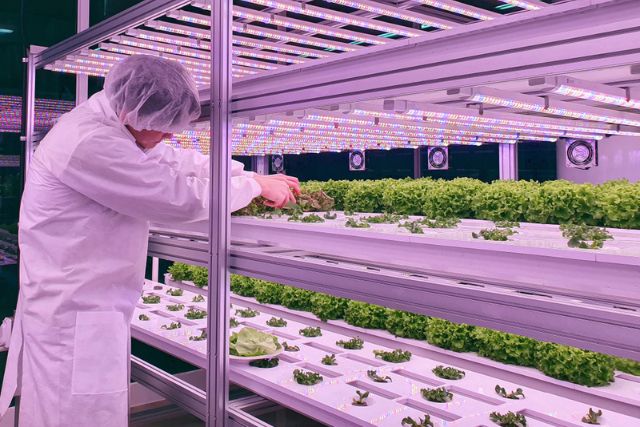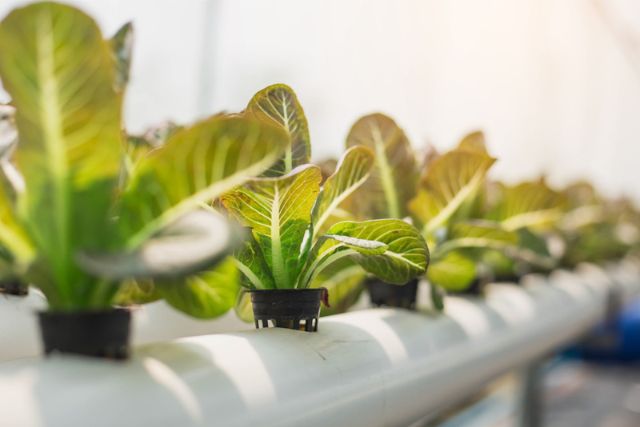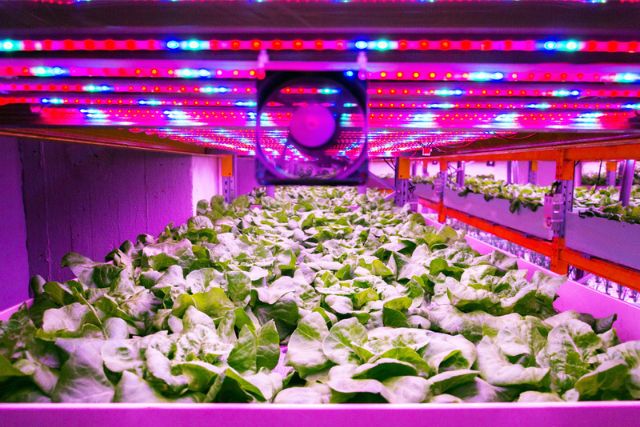
I’ve recently been working a lot with food sector clients and spending time on my blog looking at the various trends and technologies that look set to shape the way food products are produced, packed and inspected for safety and compliance.
In this post I’m continuing that pattern with a look at how vertical farming is changing the food industry.
What is the meaning of vertical farming?
Vertical farming is the process of growing agricultural produce in an artificial setting. The ‘vertical’ in the term comes from the fact that while naturally-grown produce is grown horizontally, side-by-side in fields, artificial growing happens indoors where planting beds are stacked vertically and the produce is fed, watered and lit in an environment with tight atmospheric controls.
What is the main benefit of vertical farming?
One example of vertical farming is the rise of shipping container farms. Another is vertical farms based in massive warehouses. Whatever the setting, the benefits of vertical farming are a consistent crop-yield all year round regardless of weather conditions, without the need to own or maintain an excessive amount of farmland.
Different kinds of vertical farming

There are four different approaches companies can take towards vertical farming depending on the kind of produce they intend to farm. They are:
- Hydroponics: Growing plants in nutrient-filled water instead of soil.
- Aeroponics: Similar to hydroponics, with the roots of the plants sprayed with water rather than of submerged in it.
- Aquaculture: Using controlled conditions tofarm fish and algae
- Aquaponics: A combination of both hydroponics and aquaculture that creates an entire ecosystem that allows for growing fish, algae and beneficial.
How vertical farming is changing food production

The impacts of vertical farming are many and varied:
- Companies can benefit from enormous crop yields the likes of which they’d find impossible to achieve in a farmland setting. For instance, Japan’s Mirai Corporation has at least one farm that’s able to grow up to 10,000 lettuce heads a day in a 25,000 square foot bacteria and pesticide-free space, using its own irrigation system and 17,500 LED lights.
To put it into perspective, this article by Eden Green claims a vertical farm can offer a yield 40 times greater than a traditional farm, while the UK’s largest vertical farm, the soon-to-be-opened Fischer Farm in Norfolk, will produce a yield of up to 250 times that of a standard food farm!
- At the other end of the scale, local businesses and consumers can benefit massively from smaller farming operations designed to grow food specifically to be eaten locally. In these circumstances, not only can businesses like restaurants and wholesalers get a reliable supply of fresh produce on a daily or weekly basis, but they can attract customers with the promise of locally-grown, ethically sourced ingredients that are far fresher than those flown in from foreign countries.
- The planet at large also feels the benefits of vertical farming. Be it through a lack of pesticides released into the atmosphere, or a lowering of food produce’s carbon footprint thanks to local growing and selling, the impacts of vertical farming can be as positive as companies make them depending on their approach. Vertical farming can also use around 95% less water than traditional farms, making it a brilliant alternative in countries where water is a scarce resource. Naysayers may cite increased power consumption as a downside, but with next-generation vertical farms set to be powered by renewable energy sources, the future of vertical farming has never looked greener.
Are you looking to grow your food production business?
Whether you’re interested in investing in new methods for food growing and production, fresh food packaging processes, or technology to help with food safety and authenticity, I have the expertise and contacts that can help.
Get in touch to see how I can help your food business flourish.

